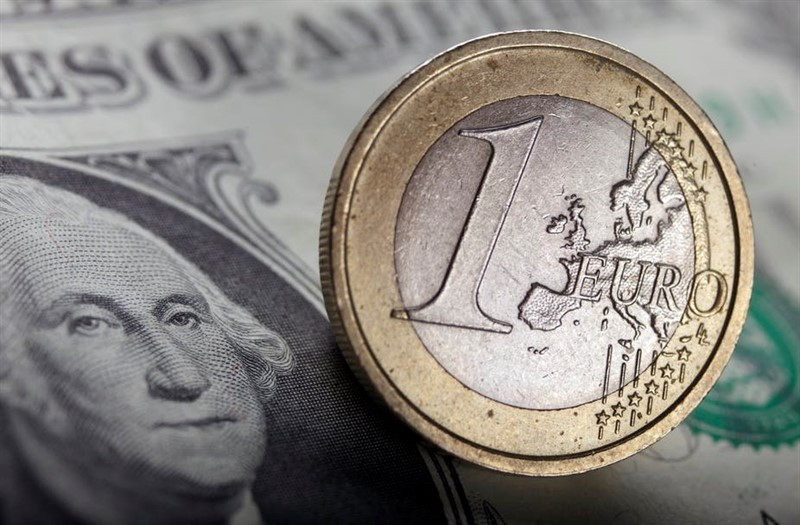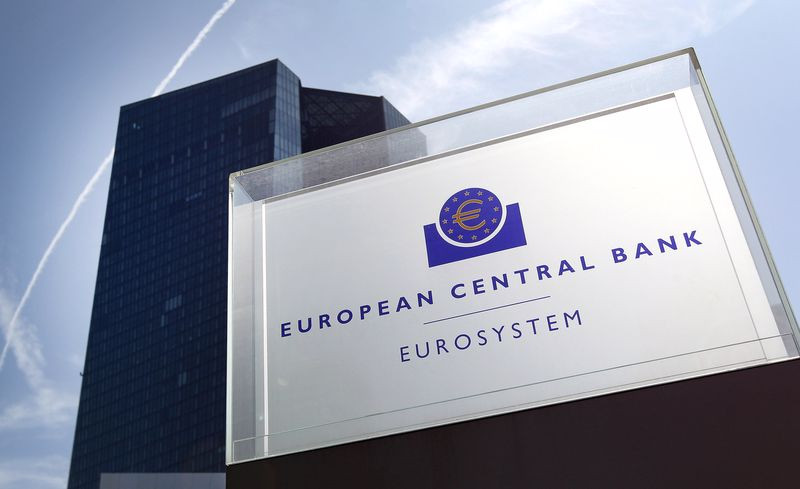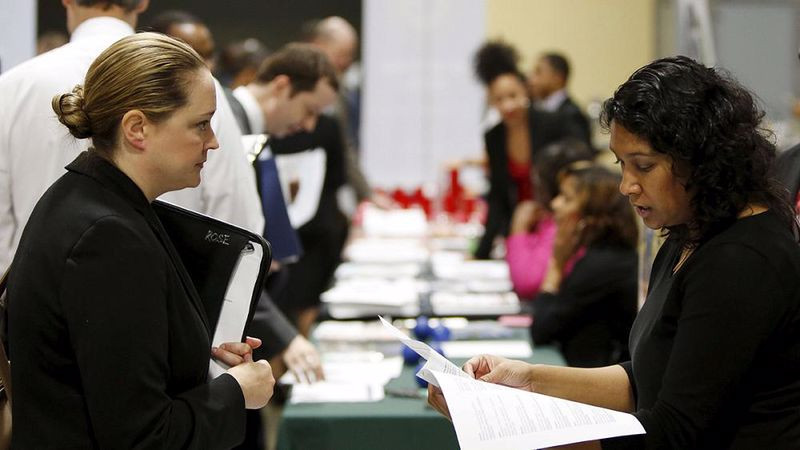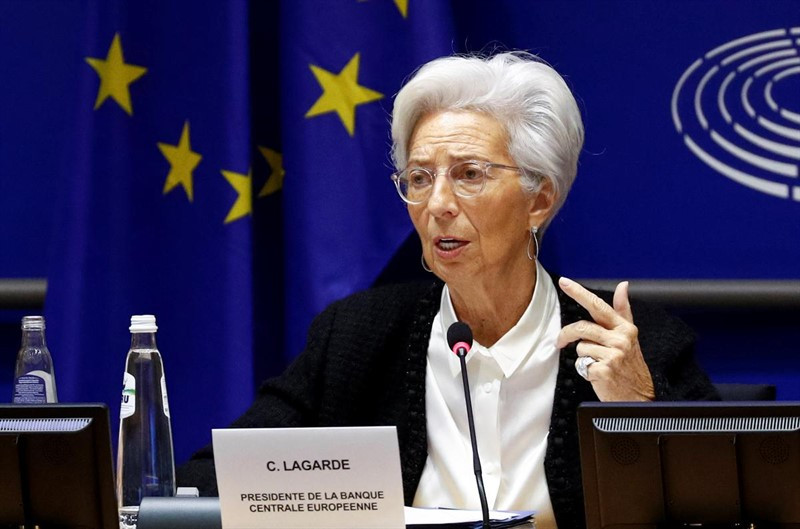
The EUR/USD pair remains at the mercy of expectations of how the differential of interest rates in the United States and the eurozone will change.
The new rate expectations for both the Federal Reserve and the European Central Bank are setting the dollar and the euro against each other as to who will prevail.
It is still difficult to say how the tug of war between these two forces will end.
After the January ECB meeting, the EUR/USD pair was squeezed in a narrow range of 1.1400-1.1500.
A breakdown of the lower boundary of this range may lead to a return to this year's lows in the region of 1.1120, while a breakthrough of the upper boundary will open the way to 1.1600.
So far, the 1.1480 mark still acts as a kind of ceiling for EUR/USD.
Having reached a 3-week peak near this mark on Friday, the pair was forced to retreat. Nevertheless, following the results of the last five days, the single currency strengthened against the US dollar by more than 2.5%, demonstrating the best week since March 2020.
These successes were caused by a hawkish reversal on the part of the ECB.
Pointing to rising inflation risks, the ECB last week opened the door to an interest rate hike later in 2022 and said the March 10 meeting would be essential to deciding how quickly the central bank would wind down its long-term bond-buying scheme, which is the cornerstone of its monetary stimulus efforts.

"The ECB found a hawk inside itself and joined many other central banks, hinting at tightening monetary policy in the future. We think that the prospects for inflation remain very uncertain, but we conclude that market pricing has become too tight," Nordea strategists noted.
Deutsche Bank closed its recommendation to be in short positions on the euro and recommended clients to open a long position on EUR/USD on Thursday after ECB President Christine Lagarde acknowledged the growing inflation risks and refused to repeat the previous forecast that an interest rate hike this year is extremely unlikely.
"In her comments, Lagarde clearly outlined a turn from a slow calendar forecast to something much more active," Deutsche Bank analysts said.
"In fact, this confirms the release of the European interest rate curve this year and turns the European Central Bank into a living central bank," they added.
The bank predicts that the ECB will raise the deposit rate, which currently stands at -0.5%, by a quarter of a percentage point in September and December, as a result of which it will be reset for the first time since 2014.
Morgan Stanley experts also changed their EUR sentiment to bullish after the January ECB meeting and recommend long positions on the euro against the US dollar.
"It seems that rising inflation expectations have caused unanimous concern among all members of the ECB Governing Council about inflation. It is increasingly likely that the central bank will implement a hawkish correction of the current exchange rate at the March monetary policy meeting," they said.
However, not everyone is convinced of the ECB's hawkish bias.
"We do not believe that the ECB is preparing for a sudden acceleration of tightening. We still believe that the Fed is on the way to significantly outperform its European counterpart by supporting the dollar," UBS Global Wealth Management analysts said.
They expect the euro to fall to $1.10 by the end of the year.
The employment report published on Friday in the United States, which turned out to be unexpectedly strong, returned traders' attention to the policy of the US central bank and helped the greenback to get rid of downward pressure.

Many analysts predicted that the American economy actually lost jobs last month amid a record increase in the number of cases of COVID-19.
However, the data released at the end of last week showed that 467,000 jobs were created in the non-agricultural sector of the United States in January.
"The surprisingly strong US employment report for January provided some support to the dollar and reminded us that the Fed is probably still at the head of the hawkish reassessment of central bank policies conducted around the world," ING analysts noted.
On Monday, the greenback managed to maintain stability against other currencies, which did not allow the EUR/USD pair to restore the positions lost on Friday.
The day before, it continued to retreat from 3-month peaks and ended yesterday's trading in negative territory near 1.1435.
The statistics on Germany released on Monday did not add optimism to fans of the single currency.
Thus, in December, the volume of industrial production in the country decreased by 0.3% compared to the previous month, while analysts expected an increase of 0.4%.
The weakening of the euro was also facilitated by the comments that Lagarde recently made.
She once again acknowledged that inflation risks in the eurozone are growing, but at the same time expressed hope that additional price pressure may still ease before it takes root in expectations.

"We should keep in mind that demand conditions in the euro area do not show the same signs of overheating that can be observed in other major economies. There is no need for a significant tightening of monetary policy in the eurozone, since inflation will slow down and may stabilize at about 2%," Lagarde said.
She also noted that the ECB will not raise the interest rate until the end of purchases of net assets.
"There is a certain sequence between the end of our net asset purchases and the start date of the rate hike, which will not occur until our net asset purchases are completed," Lagarde said.
"Any adjustment of our policy will be gradual," she added.
In order to raise the key rate in September, the ECB will need to complete quantitative easing earlier than planned, and until then investors can refrain from introducing aggressive policy tightening into quotes.
In addition, if inflation starts to decline as supply chains recover and commodity markets cool, a rapid rate hike could be counterproductive. As a result, policy may suddenly turn out to be too tight, as happened with the ECB a decade ago.
The ECB is also in no hurry to rush anywhere because the inflationary threat is hardly worse than the debt crisis, the ghost of which has been hovering over the eurozone for ten years since the Greek default, and which can be easily awakened again by abandoning the zero-interest policy.
If last week the head of the ECB sent the ball in a positive direction for the euro, this week she has already tried to cool expectations about the hawkish turn of the central bank.
Now the focus is shifting to US inflation, which the market will use to determine whether the Fed rate will rise by 25 basis points or 50 basis points next month.
"The publication of the CPI report for January in the US is the main event this week. The consensus indicates an overall level of 7.3% with an increase in base prices to 5.9%," Nordea strategists said.

The futures market estimates the probability of raising the federal funds rate by 50 basis points in March by almost 1 to 3, and the CPI value at the highest level in four decades will increase this probability, which will provide even greater support to the dollar.
Despite the sharp weakening of the greenback last week, it remains in a growing trend that originates from the lows of May 2021.
As a rule, the momentum of the US currency's growth towards its main competitors weakens when several months pass after the Fed's key rate hike. Then it becomes clear that other central banks have already reached the same rate of interest rate increases, and are often even ready to act more decisively.
However, we are not in this phase yet, and the monetary policy of the Fed, as well as US economic indicators, provide the dollar with a head start for growth in the near future.
Based on this, the recent high on the USD index is not final. There is a possibility that the greenback will rise to the area of 100-103 by the middle of the year.
"Eventually, investors will realize that in the coming months, interest rates in the United States will rise much more than in the eurozone," UniCredit analysts noted.
While money markets forecast a cumulative Fed rate hike of as much as 134 basis points over the remainder of 2022, they expect the ECB to raise rates by 50 basis points over the same period.
Scotiabank believes that the EUR/USD pair will fall to 1.1000 as soon as it becomes clear that the ECB will only slightly raise rates in 2022.
"We believe that the ECB may disappoint markets expecting a 50 basis point rate hike this year. Therefore, we see the risk that the euro will turn around to $1.10 as soon as it becomes clear that the ECB will only slightly raise the rate in 2022, if at all," they said.
On Tuesday, the EUR/USD pair declined for the second consecutive day - in the direction of the key support level at 1.1400.
The greenback is strengthening ahead of the publication of US inflation data, which will be released later this week.
The yield of 10-year treasuries is growing towards 2% today, helping the dollar to find demand. The US currency may extend the rebound if the yield of the "ten-year" rises above this level, which will put additional pressure on EUR/USD.
If the pair breaks below the psychologically important level of 1.1400, the next target of the bears will be 1.1350, and then 1.1305.
On the other hand, the resistance is located at 1.1480, and further - at 1.1500 and 1.1550.
 English
English 
 Русский
Русский Bahasa Indonesia
Bahasa Indonesia Bahasa Malay
Bahasa Malay ไทย
ไทย Español
Español Deutsch
Deutsch Български
Български Français
Français Tiếng Việt
Tiếng Việt 中文
中文 বাংলা
বাংলা हिन्दी
हिन्दी Čeština
Čeština Українська
Українська Română
Română

